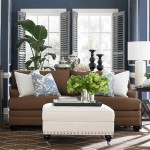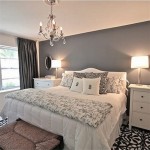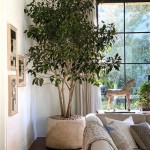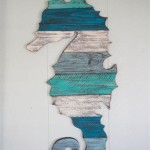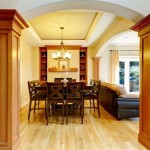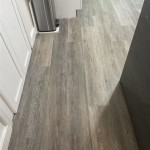Modern Homes Interior Design and Decorating Ideas
Modern interior design emphasizes simplicity, functionality, and clean lines. It's a style that celebrates natural light, open spaces, and a carefully curated selection of furniture and decor. This approach creates a sense of calm and sophistication, making it a popular choice for homeowners seeking a timeless and elegant aesthetic.
Embracing Minimalism
Minimalism plays a crucial role in modern interior design. This design philosophy focuses on reducing clutter and embracing essential elements. Furniture pieces are often streamlined and multi-functional, serving both aesthetic and practical purposes. Storage solutions are integrated seamlessly into the design, keeping surfaces clear and maintaining a sense of order. The emphasis on negative space allows the eye to rest and appreciate the carefully chosen elements within the room.
A minimalist approach doesn't necessarily mean stark or bare. Texture and subtle patterns can be introduced through textiles, rugs, and wall finishes to add depth and warmth without overwhelming the space. A neutral color palette, often featuring shades of white, gray, and beige, provides a calming backdrop and allows pops of color to stand out.
Natural Light and Open Spaces
Modern homes often prioritize maximizing natural light. Large windows, skylights, and open floor plans contribute to a bright and airy atmosphere. This connection to the outdoors blurs the lines between interior and exterior spaces, creating a sense of expansiveness and tranquility. The strategic placement of mirrors can further enhance natural light distribution within the room.
Open floor plans are a hallmark of modern design, promoting a seamless flow between living areas. This layout encourages social interaction and creates a sense of spaciousness, even in smaller homes. Careful zoning with rugs, furniture placement, and lighting fixtures can define distinct areas within the open plan while maintaining visual continuity.
Selecting Furniture and Decor
Furniture in modern interiors is typically characterized by clean lines, simple silhouettes, and high-quality materials. Pieces are chosen for their functionality and aesthetic appeal, avoiding overly ornate or decorative elements. Natural materials like wood, leather, and stone are often incorporated, adding warmth and texture to the space.
Decorative elements are used sparingly in modern design, with a focus on quality over quantity. A few carefully selected pieces of art, sculptural objects, or plants can add personality and visual interest without cluttering the space. The principle of "less is more" applies, allowing each item to have its own impact and contribute to the overall cohesive design.
Consider incorporating iconic mid-century modern furniture pieces or contemporary designs that echo the clean lines and functional aesthetic of the era. These pieces can serve as focal points within the room, adding a touch of sophistication and timeless style.
Integrating Technology Seamlessly
Modern homes often incorporate smart home technology to enhance convenience and functionality. Integrated lighting systems, automated window treatments, and centralized entertainment systems can be seamlessly incorporated into the design, streamlining daily life and creating a more comfortable living environment.
Concealing wires and cables is crucial in maintaining the clean and uncluttered aesthetic of modern design. Strategic placement of furniture and built-in storage solutions can help hide technology components and maintain a sense of visual order.
Using Color and Texture Strategically
While neutral color palettes are common in modern design, strategic use of color and texture can add depth and personality to the space. Accent walls, colorful artwork, and textured textiles can be incorporated to create visual interest and warmth. Consider using a monochromatic color scheme with varying shades of a single color for a sophisticated and cohesive look.
Natural materials like wood, stone, and concrete can introduce texture and warmth to the space. Incorporating these materials in flooring, countertops, or accent walls can create a sense of organic beauty and balance the clean lines of modern furniture.
Sustainability in Modern Design
Sustainable design practices are becoming increasingly important in modern homes. Incorporating eco-friendly materials, energy-efficient appliances, and sustainable furniture choices can minimize environmental impact while maintaining a stylish aesthetic. Reclaimed wood, recycled materials, and organic textiles can add character and contribute to a more sustainable living environment.
Consider using low-VOC paints, energy-efficient lighting, and water-saving fixtures to further reduce the environmental footprint of the home. These choices not only benefit the planet but also contribute to a healthier and more comfortable living space.

95 Best Modern House Interior Design Ideas

10 Contemporary Interior Design Ideas Of 2025 Designcafe

5 Amazing Modern House Design Ideas You Must See Livspace

13 Creative Home Decor Ideas Design Cafe

Cuteso Com Modern Apartment Design Living Room Decor Interior

Luxury Home Decor Elegant Ideas For Your Space

100 Home Decor Ideas The Ultimate Inspiration For Interior Designers

45 Irresistibly Stylish Midcentury Modern Living Room Idea

50 Style Modern Living Room Ideas To Try In 2025

Minimalist And Modern Holiday Home Decoration Ideas
